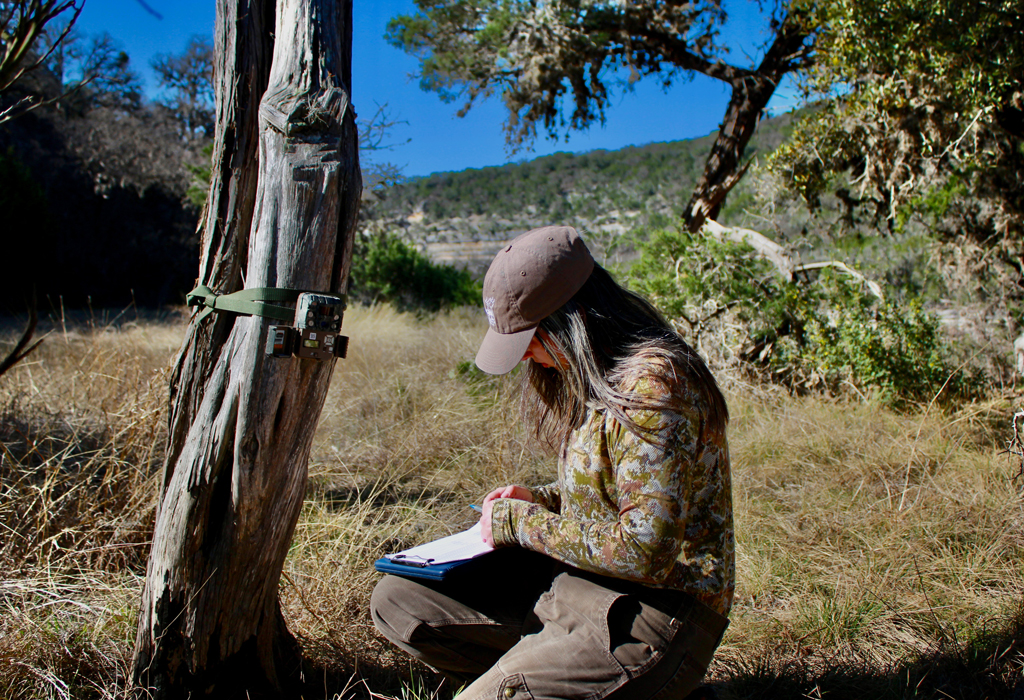
Miranda Hopper, a doctoral student at Texas A&M University-Kingsville’s Caesar Kleberg Wildlife Research Institute, is using game cameras across the Texas Hill Country to study how factors like elevation, vegetation management, and human activity influence the distribution and behavior of large mammals.
Can you tell us more about your research?
The Hill Country is home to a diverse and unique host of animals. Our goal is to use game cameras to assess the distribution and relative abundance of mammal species relative to landscape factors, such as elevation, juniper management, and human recreation. We currently have 93 cameras deployed across 17 properties, ranging from as far west as Brackettville to as far east as Austin, with more expansion underway. We are hoping that this data will provide insights into how large mammals interact and share the landscape.
Why did you choose Shield Ranch Camp Wood and Shield Ranch Barton Creek among your research sites?
Shield Ranch Camp Wood and Shield Ranch Barton Creek represent the diversity of land in the Hill Country. Shield Ranch Camp Wood is more remote, more rugged, and home to a wider variety of ungulates (hoofed animals) because of the exotic species found there. Shield Ranch Barton Creek is less rugged, closer to human development, and has ungulates that are more typical across the white-tailed deer’s range, like feral hogs. We felt that these two properties would allow us to ask our research questions across a gradient of habitat types that are more representative of the Hill Country as a whole.
What kinds of large mammals have you observed on the game cameras at the ranches so far? Any surprises?
At Shield Ranch Barton Creek, we observed primarily white-tailed deer and feral hogs. At Shield Ranch Camp Wood, we observed white-tailed deer, feral hogs, aoudad, red deer, and axis deer. We also captured a few javelina on camera, which was exciting because anecdotal evidence suggests they are declining in the area. I wouldn’t consider it a large mammal, but we have detected ringtails at both properties, and that has been really cool.
How can understanding the population density and behavior of large mammal species help inform land management decisions?
This camera data can give us an idea of where animals are and where they tend to be more than in other places. That provides insights into what they like, what they don’t like, and what they’re able to access. If we relate that to certain habitat management, like juniper removal, we can gain a better understanding of what techniques benefit or deter certain species. We are hoping to be able to provide this information to landowners, so that they can make informed decisions about implementing practices on their properties that best align with their management objectives.
What excites you most about this project, and what do you hope your research will contribute to the future of wildlife conservation in the Texas Hill Country?
The more I learn about the Hill Country, the more I appreciate how unique this system is. I have loved meeting all the landowners and learning about the unique species that live here, many of which I had never heard of before starting the project. Not only is the Hill Country unique, but it is rapidly changing and facing many challenges, such as development, fragmentation, drought, and ecosystem disruption caused by invasive plants and animals, all of which will have significant impacts on native species. There is a reason why people flock to the Hill Country for its natural beauty, and I just want to do my part to ensure that it’s still intact for future generations of people and animals to enjoy.
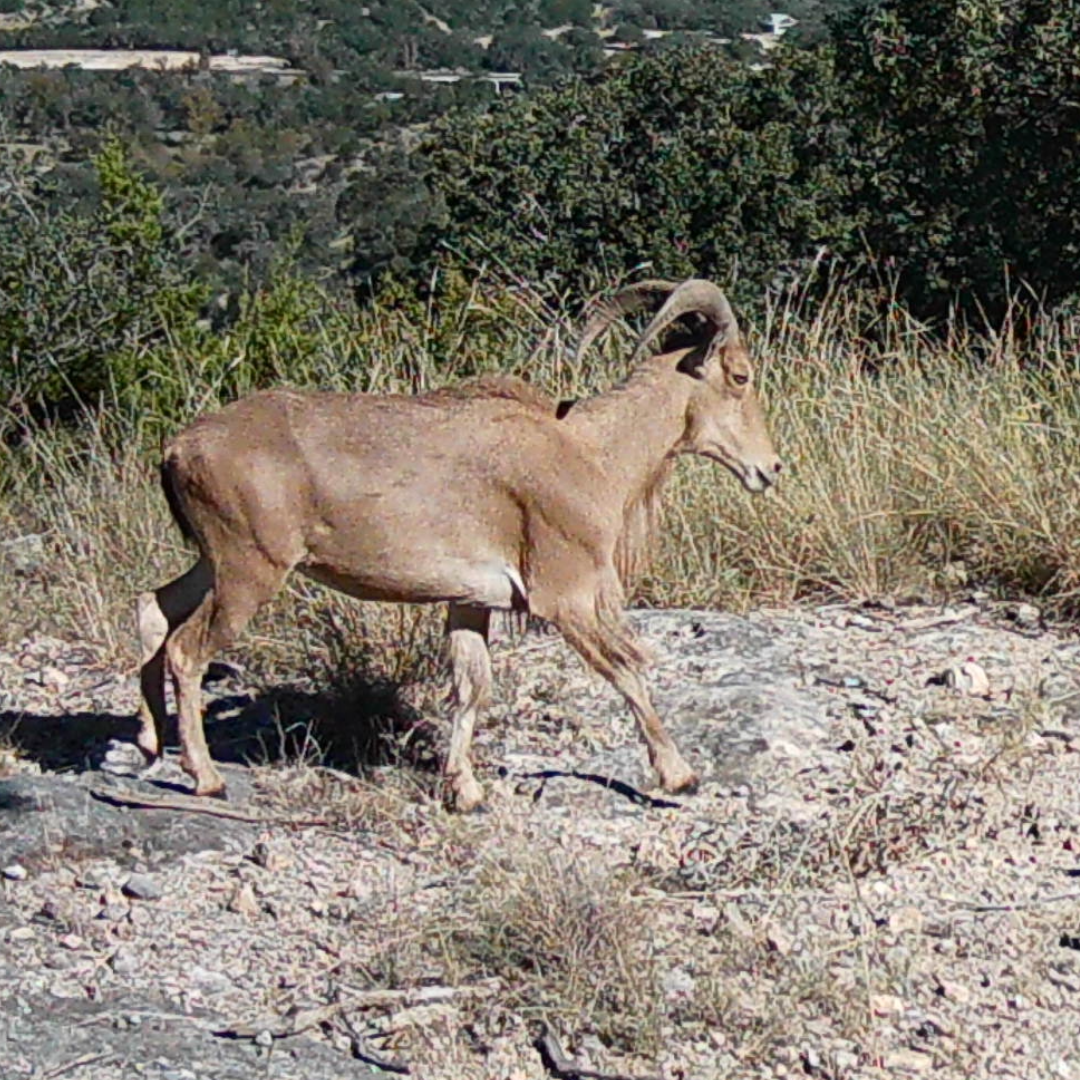
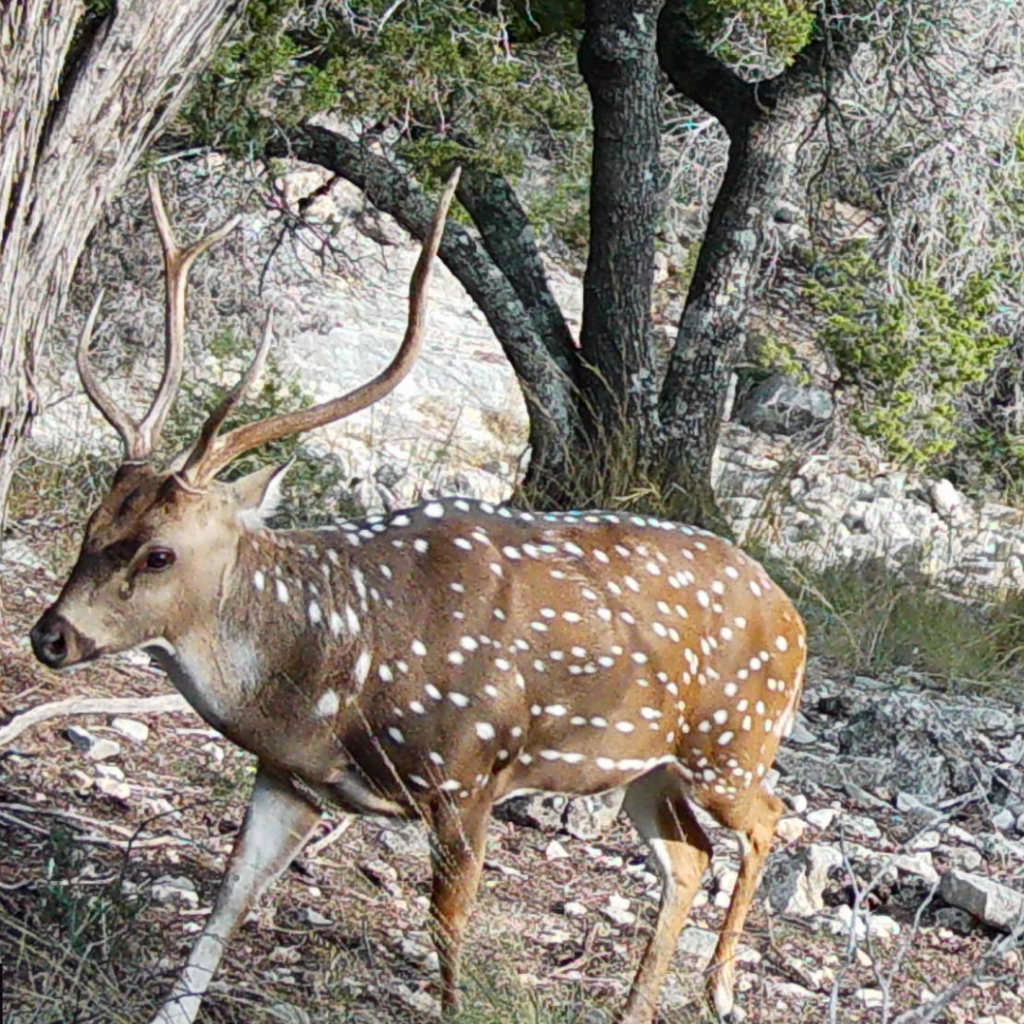
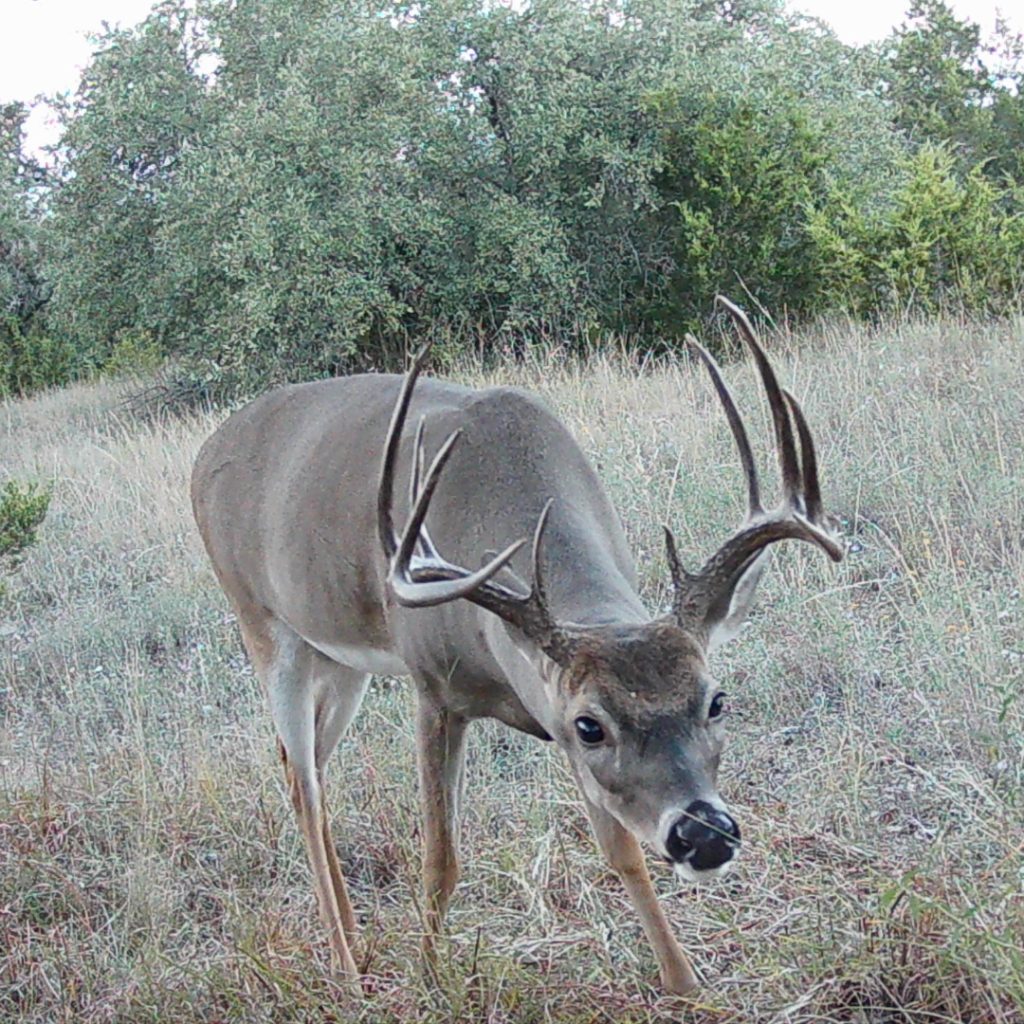
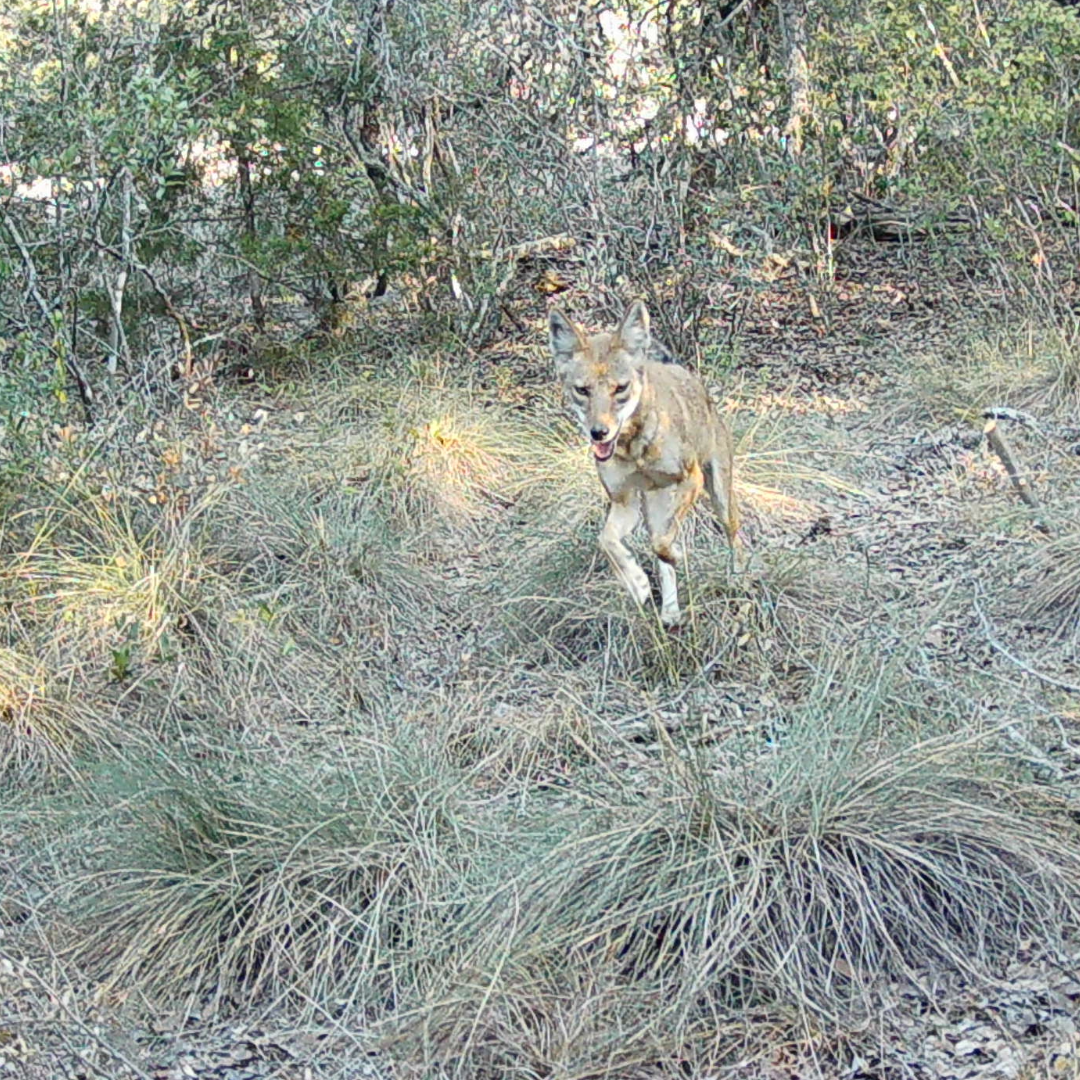
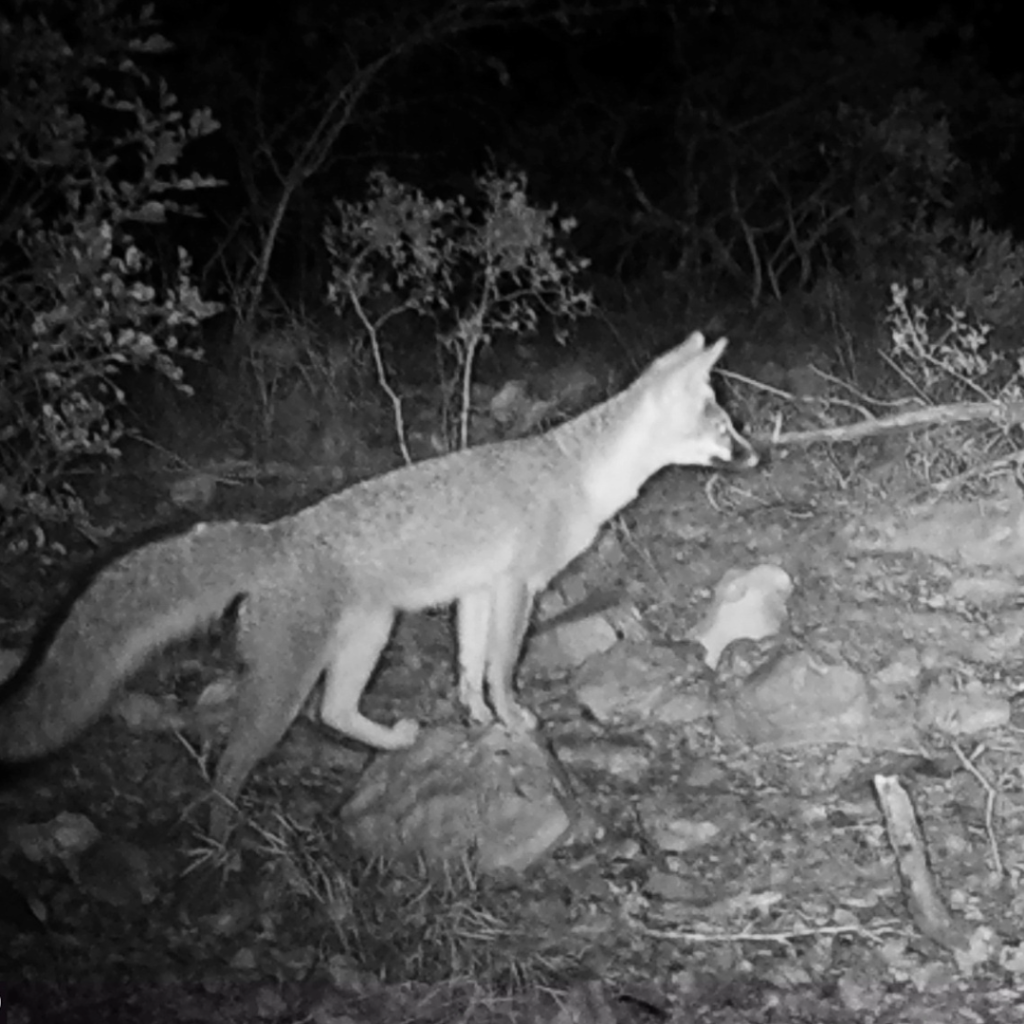
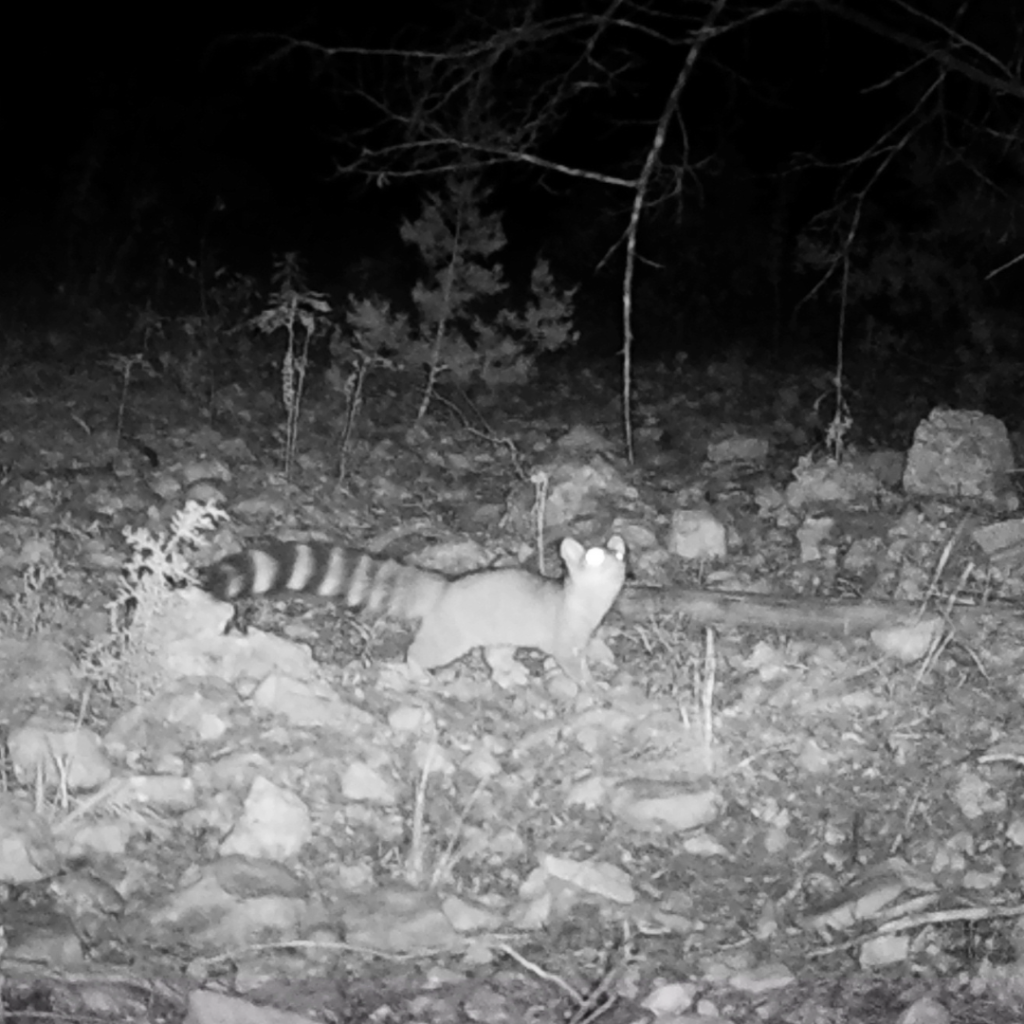
Game cameras captured photos of a variety of animals, including aoudad, axis deer, white-tailed deer, coyotes, gray foxes, ringtails (and more not pictured here); photos courtesy of Miranda Hopper.
